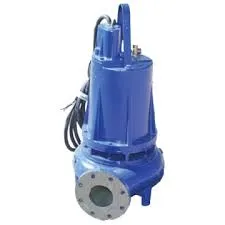Finnish
- Afrikaans
- Albanian
- Amharic
- Arabic
- Armenian
- Azerbaijani
- Basque
- Belarusian
- Bengali
- Bosnian
- Bulgarian
- Catalan
- Cebuano
- Corsican
- Croatian
- Czech
- Danish
- Dutch
- English
- Esperanto
- Estonian
- Finnish
- French
- Frisian
- Galician
- Georgian
- German
- Greek
- Gujarati
- Haitian Creole
- hausa
- hawaiian
- Hebrew
- Hindi
- Miao
- Hungarian
- Icelandic
- igbo
- Indonesian
- irish
- Italian
- Japanese
- Javanese
- Kannada
- kazakh
- Khmer
- Rwandese
- Korean
- Kurdish
- Kyrgyz
- Lao
- Latin
- Latvian
- Lithuanian
- Luxembourgish
- Macedonian
- Malgashi
- Malay
- Malayalam
- Maltese
- Maori
- Marathi
- Mongolian
- Myanmar
- Nepali
- Norwegian
- Norwegian
- Occitan
- Pashto
- Persian
- Polish
- Portuguese
- Punjabi
- Romanian
- Russian
- Samoan
- Scottish Gaelic
- Serbian
- Sesotho
- Shona
- Sindhi
- Sinhala
- Slovak
- Slovenian
- Somali
- Spanish
- Sundanese
- Swahili
- Swedish
- Tagalog
- Tajik
- Tamil
- Tatar
- Telugu
- Thai
- Turkish
- Turkmen
- Ukrainian
- Urdu
- Uighur
- Uzbek
- Vietnamese
- Welsh
- Bantu
- Yiddish
- Yoruba
- Zulu
Telephone: +86 13120555503
Email: frank@cypump.com
joulu . 04, 2024 00:50 Back to list
A Comprehensive Guide to Submersible Mixed-Flow Pumps and Their Applications
Submersible Mixed-Flow Pumps An In-Depth Overview
Submersible mixed-flow pumps are essential devices used in various applications, from municipal water supply and sewage treatment to agricultural irrigation and industrial processes. Unlike traditional surface pumps, these pumps operate underwater, effectively moving liquids from lower to higher elevations while minimizing the risk of cavitation and maximizing efficiency.
Design and Functionality
The design of a submersible mixed-flow pump is a fusion of various engineering concepts that optimize fluid dynamics. The pump consists of a motor section fully sealed to prevent water ingress, a volute casing, and an impeller that is either mixed-flow or axial-flow in nature. The mixed-flow impeller combines the features of centrifugal and axial pumps, making it particularly adept at handling large volumes of fluid with moderate lift.
When in operation, the electric motor drives the impeller, generating pressure that propels the liquid through the volute and out of the discharge pipe. The unique design allows these pumps to handle a range of flow rates and heads, making them suitable for applications requiring substantial volumes of fluid. The submersible nature of these pumps means they can operate in depths where traditional pumps might struggle, such as deep wells or large tanks.
Advantages of Submersible Mixed-Flow Pumps
1. Efficiency Submersible mixed-flow pumps are designed to minimize energy consumption while maximizing flow rates. Their submerged operation reduces the risk of air intrusion and cavitation, allowing them to perform at optimal efficiency.
2. Space-saving Design Because they are installed underwater, these pumps save valuable surface space. This is particularly advantageous in urban settings where installation area is limited.
3. Reduced Noise Levels Operating beneath the surface, submersible pumps generate significantly less noise than their surface-mounted counterparts. This characteristic is crucial in residential areas or environments where noise pollution must be minimized.
4. Versatility These pumps are adaptable to various applications. They can be used for pumping clean water, wastewater, and even slurries, depending on the design and material of the pump construction.
5. Reliability Crafted to withstand harsh environmental conditions, submersible mixed-flow pumps often feature corrosion-resistant materials, making them suitable for use in chemically aggressive environments.
submersible mixed-flow pumps an in-depth overview and ...

Applications
Submersible mixed-flow pumps find their application in numerous sectors.
- Municipal Water Supply Often utilized in deep wells, municipal systems rely on these pumps for efficient water distribution. - Wastewater Treatment Their capacity to handle solids makes them ideal for sewage systems, where they transport wastewater effectively.
- Agriculture These pumps play a crucial role in the irrigation of crops, ensuring that water is delivered efficiently to agricultural fields.
- Industrial Uses In industries, they are used for dewatering, handling process fluids, and other specialized tasks where efficient fluid movement is essential.
Maintenance and Challenges
While submersible mixed-flow pumps are robust, they are not without challenges. Regular maintenance is crucial to ensure longevity and performance. Common issues include motor bearing wear, impeller damage, and electrical failures due to water ingress. To mitigate these risks, operators must conduct routine inspections and maintain appropriate levels of lubrication and cooling.
Another challenge involves the installation process. Proper sealing and anchoring are essential to avoid pump misalignment or damage due to shifting soil or sediment.
Conclusion
Submersible mixed-flow pumps are a critical component in modern fluid transport systems. Their efficient design, versatility, and ability to operate in challenging environments make them invaluable across many industries. Understanding their operation, advantages, and maintenance needs can help operators maximize their performance and extend their lifespan, ensuring that infrastructure remains reliable and effective. As technology continues to advance, we can expect further improvements in the design and efficiency of these essential devices, cementing their role as the backbone of contemporary water management solutions.
-
Custom Drilling Mud and Slurry Pump Supplier - High Efficiency, Tailored Solutions
NewsJun.10,2025
-
Supply Vertical Submersible Sewage Pump High-Efficiency WQ/QW Pumps Supplier
NewsJun.10,2025
-
Premium Sewage Ejection System & Pumps Efficient Waste Removal
NewsJun.09,2025
-
Premium Wholesale Slurry Pump Impellers Durable & Efficient Slurry Handling
NewsJun.09,2025
-
Top Sewage Pump Companies Durable Industrial Solutions for Efficiency
NewsJun.09,2025
-
Heavy Duty Slurry Pumps - OEM High Performance & Bulk Wholesale
NewsJun.09,2025










